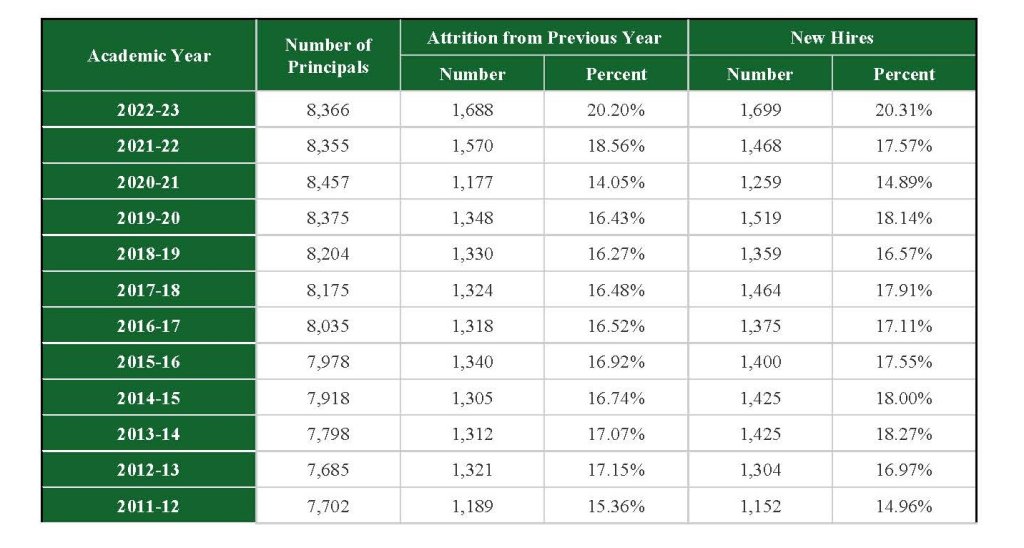Principal turnover in Texas has reached alarming levels, with over 21% of principals leaving their positions in the 2023-2024 school year. This represents a 5% increase over the past decade, highlighting the growing challenges school leaders face. Furthermore, the high rate of attrition raises concerns about leadership stability, student achievement, and school culture, emphasizing the urgent need to address the factors fueling this trend.

Why Are Principals Leaving?
Several key factors contribute to principal turnover. A National Center for Education Statistics analysis found that in the 2021-22 school year:
- Job-Related Stress: A staggering 85% of school leaders report significant job-related stress, often leading to burnout and early exits from the profession.
- Lack of Support: Many principals feel they are asked to do more with fewer resources, making it challenging to implement meaningful change.
- Intense Pressure: Principals face increasing pressure from state mandates, district expectations, parents, and the community, often without adequate support systems.
- Experience and Age Factors: Principals with 10+ years of experience tend to leave at higher rates than those with less than three years in the role. Additionally, 20% of principals over 55 years old exit their jobs, underscoring the need for succession planning.
- School Demographics Impact: Schools with 75% or more students of color experience the highest principal turnover rates, often due to systemic challenges and limited resources.
The Impact of Principal Turnover
Frequent leadership changes disrupt school stability, impacting teacher retention, student outcomes, and overall school performance. With the average tenure for a high school principal in Texas at just over three years, schools undergo frequent leadership transitions, making it more challenging to sustain long-term improvement efforts.
Addressing the Principal Shortage
To combat principal turnover and strengthen school leadership, Texas school districts must invest in:
- Strong Support Systems: Implementing mentorship programs, leadership coaching, and administrative support can help new principals navigate the complexities of their role.
- Workload Management: Reducing administrative burdens and ensuring sufficient staffing can prevent burnout and also greatly enhance job satisfaction.
- Professional Development: Providing targeted training programs enables principals to stay updated on best practices and effective leadership strategies.
- Leadership Pipeline Development: Encouraging educators to pursue principal certification to ensure a continuous pool of qualified candidates ready to take on leadership roles.
How the Principal Certification Network (PCN) Supports Aspiring Leaders
The Principal Certification Network (PCN) is an essential resource for aspiring school leaders, offering a clear and efficient pathway to certification.

Specifically, PCN offers:
- Comprehensive Preparation: Candidates receive expert guidance, training, and mentorship to help them develop the skills necessary for success.
- Flexible Learning Options: Tailored for working educators, PCN also provides coursework that fits into busy schedules.
- Real-World Leadership Training: Participants gain valuable hands-on experience through fieldwork, case studies, and practical applications.
- Statewide Support Network: PCN connects candidates with experienced school leaders and a community of peers, further promoting collaboration and continuous professional growth.
Finally, as Texas school districts face a growing need for strong, well-prepared principals, PCN plays a key role in developing future leaders to address the challenges of today’s schools. If you or someone in your district is ready to take the next step toward school leadership, now is the perfect time to discover how PCN can support your journey to principal certification.
Andrea is a Leadership Certification Specialist here at ESC Region 13.





Add comment